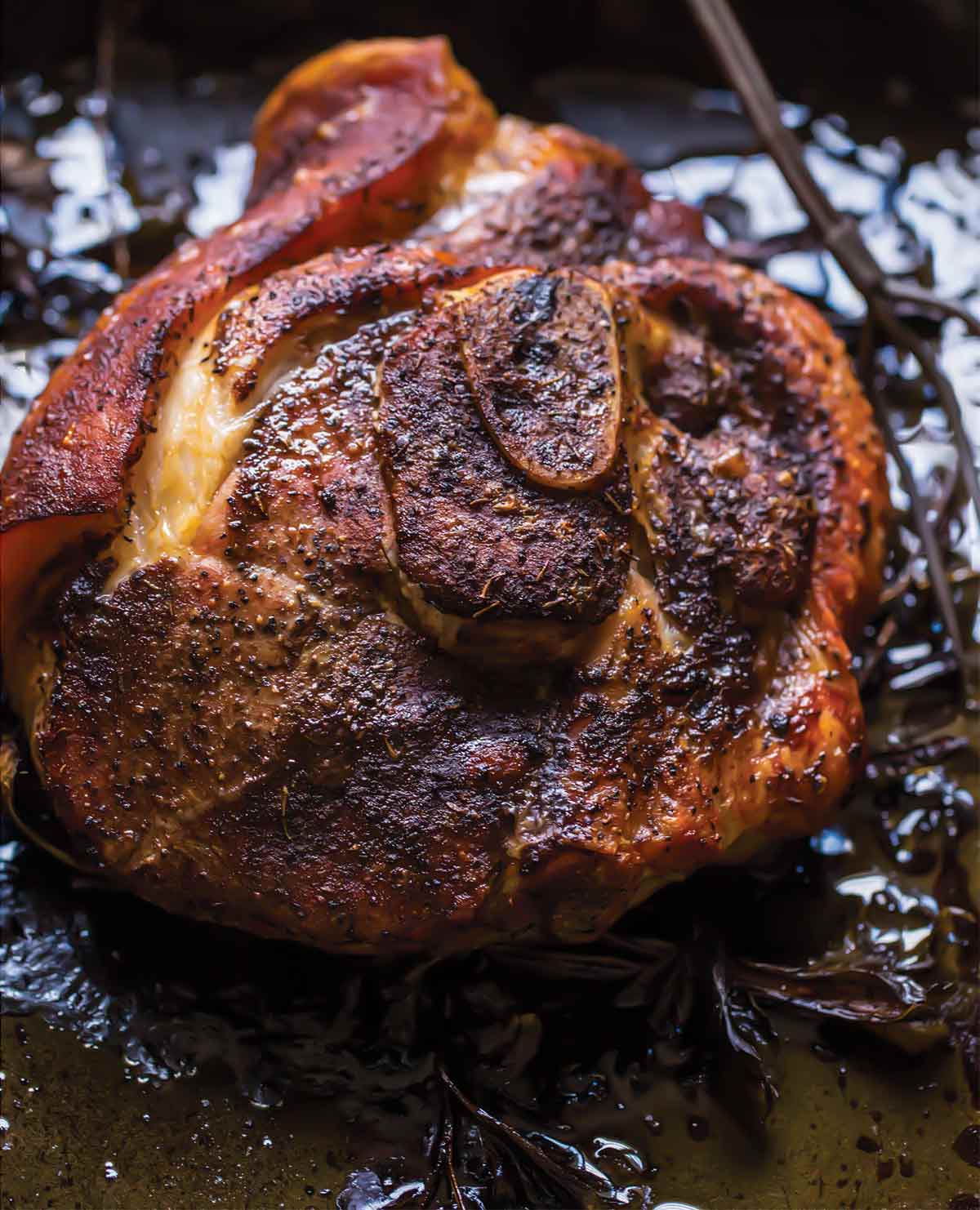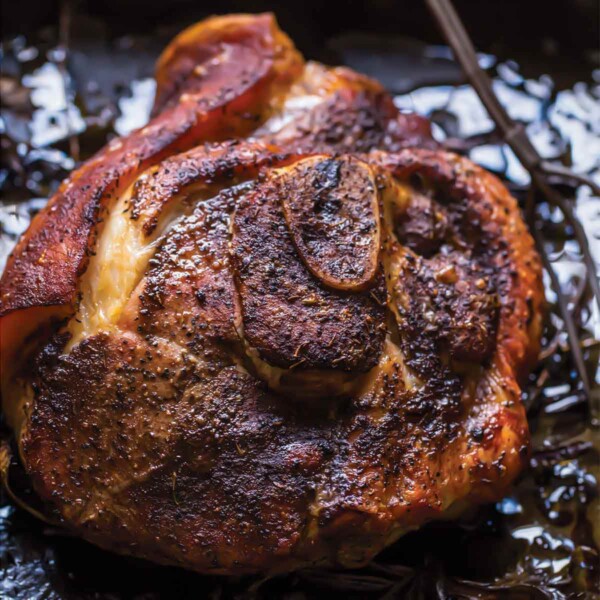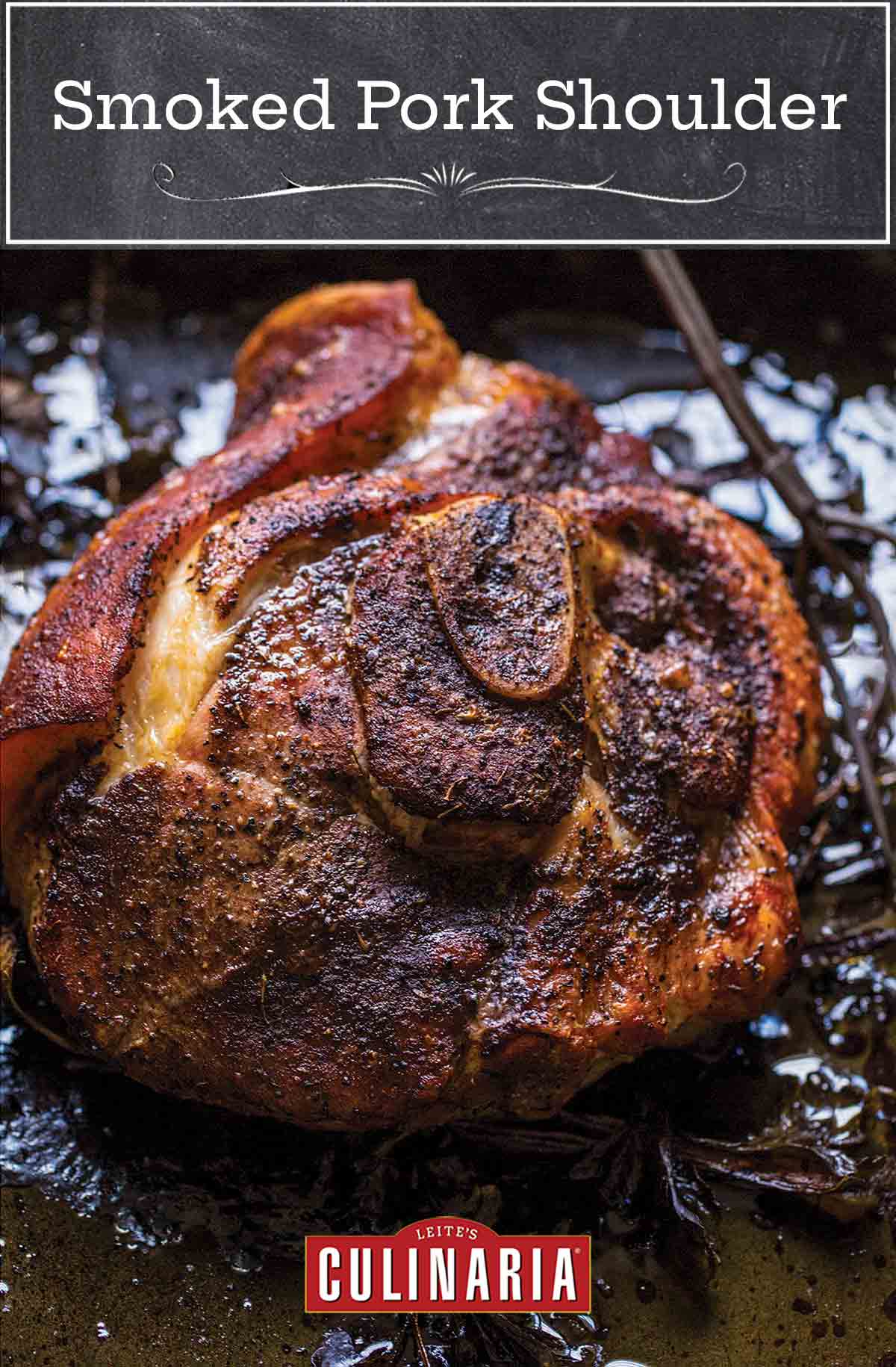
If smoked pork shoulder isn’t the most rewarding thing you can pull off your smoker, we don’t know what is. Yeah, it’s an all-day affair. But it’s not a difficult affair. Toss the pork on the smoker after breakfast and by dinner, you’ll be moaning over rich, tender pulled pork encased in a crispy, smoky crust. Probably with half the neighborhood clamoring at your backyard gate. Thankfully, the recipe makes plenty.–Angie Zoobkoff
Smoked Pork Shoulder FAQs
While you can use any available wood chips to smoke your pork shoulder if you have options, here’s what to consider. Wood from fruit trees goes exceptionally well with pork so apple, cherry, peach, or even maple would all be terrific. Some woods are more popular, depending on location. Texas is known for pecan or oak, while hickory is integral to Memphis barbecue.
Toss together a few easy salads, like this crème fraîche potato salad or this creamy coleslaw with cilantro, and whip up a batch of quick cornbread. If you’d like a rich, warm side to go along with it, give this cheesy smoked mac and cheese a try. You won’t be disappointed.
If you are monitoring your temperature closely, you may notice that the internal temperature seems to stop rising once the meat reaches 160°F. This is referred to as the “stall”, where the collagen in the meat begins to break down, giving you that tender meat you’re craving. Just let it do its thing. The stall may last for several hours before the temperature begins to climb again.
The options for leftover smoked pulled pork are plentiful and so delicious that you may want to make sure you save some just for that purpose. We highly recommend stuffing the leftover pork into BBQ pulled pork tacos or stuffing it into a pulled pork grilled cheese sandwich.

Smoked Pork Shoulder
Equipment
- Smoker
Ingredients
For the smoked pork shoulder rub
- 2 tablespoons kosher salt
- 2 tablespoons freshly ground black pepper
- 2 tablespoons granulated sugar
- 3 tablespoons garlic powder
- 2 tablespoons onion powder
- 3 tablespoons paprika
- 1 tablespoon ground sage
- 2 teaspoons dried oregano
- 1 teaspoon dry mustard
- 1 teaspoon cayenne pepper
For the pork shoulder
- One (8-to 10-pound) bone-in pork shoulder (may also be labeled pork butt or Boston butt)
- Vinegar Barbecue Sauce, (optional)
Instructions
Make the dry rub
- In a small bowl, mix all the ingredients.
- Rub the spice mixture thoroughly over the pork shoulder. Wrap the pork in plastic wrap and refrigerate for at least 8 hours and up to 24 hours.
Smoke the pork shoulder
- About 1 hour before smoking the pork, unwrap the pork shoulder and let it rest at room temperature.
- Heat your smoker to 225°F (105°C). This may require several additions of water-soaked wood to keep the smoke going.
- When the temperature of the smoker has reached a constant 225°F (105°C), place the pork shoulder, fatty side up, on the rack. Close the lid and adjust the vents so the smoke flows freely throughout the smoker.
- Cook until the meat is exceptionally and sigh-inducingly tender and reaches an internal temperature of 185° to 195°F (85° to 90°C), somewhere between 10 to 14 hours or about 1 1/2 hours per pound of meat. Let the meat rest for at least 30 minutes.
- Slice, pull, or chop the pork. Demolish it immediately, doused with Vinegar Barbecue Sauce, if desired.

Nutrition
Nutrition information is automatically calculated, so should only be used as an approximation.
Recipe Testers’ Reviews
This smoked pork shoulder recipe is Exhibit A to prove that good things come to those who wait. The flavorful, dark bark on the pork when it comes off the smoker after that 12-hour cooking marathon (low and slow is the way to go!) is so worth the wait.
While the dry spice rub, applied the night before, is fairly standard, with paprika, sugar, cayenne and black peppers, salt, garlic, and onion powder, the addition of sage takes the rub to another plane. We often think of sage in the context of a poultry rub but when added to this pork rub, it adds a certain earthy lemoniness that most every BBQ rub lacks. And that flavor doesn’t get lost. Rather, it comes through in spades and makes for a really “wow” moment with every bite.
We served this smoked pulled pork with our favorite coleslaw, some mac ‘n cheese, and hot sauce. And if you drizzle it with vinegar barbecue sauce, it’s really over the top.
This is pretty much a classic dry-rubbed pulled pork recipe. The spices really permeated the meat and the flavors were readily discerned in the cooked meat.
The rub can be made very quickly—assembled and applied in less than 10 minutes, so there is very little hands-on time with this recipe. I refrigerated the rubbed pork roast for 24 hours. I made this smoked pork butt with a 4-pound pork shoulder so the smoking time was quite a bit less than stated in the recipe, but it still took 6 hours to be completely done. We used hickory wood in the smoker.
The 4-pound roast served 4 with a little leftover for pulled pork sandwiches. We served it in true barbecue fashion with baked beans, potato salad, and coleslaw.













You mentioned a vinegar-based sauce. Would you post the recipe for it, please?
Best Regards,
Eric Hord
Eric, if you look in the last step, the words “Vinegar Barbecue Sauce” are linked to the recipe. Happy cooking!!
Yup, take that puppy off, wrap in foil, rest in an ice chest will remain hot for hours. Like I really left one overnight and was warm in the morning. Best way to rest and serve. Be blessed ?
Keith, thanks for the advice!
My 10lb shoulder hit 190F internal temp after 9 hours @225F, when I was allotting for at least 13 hours. What would you recommend to do in this situation? Hold it at 190F for a few more hours, or take it out and let it rest?
Does holding the pork for an extended time at an internal temp of 180-190F make the pork more likely to dry out/become tough? Or will it break down more collagen/connective tissue?
A probable explanation on why this happened, I used my kitchen oven with the pork shoulder in a dutch oven, lid closed. I know my oven temperature was accurate since I use a redundant thermometer. Enough liquid came out of the shoulder that it was 70% submersed. I’m assuming the difference in air and liquid heat transfer properties is the main reason for a faster cook.
Kristine, is the pork tender? Is it easily pulled apart? If so, you’re ready to go. If not, it can go longer. Low and slow is what helps the collagen break down. I agree: I think the small closed space of the Dutch oven, no ventilation, and the accumulation of liquid quickened the cooking.
The middle was still a little tough so I turned the oven off but left the shoulder in, dutch oven and all. The center remained stable at 190F for another 2 hours, and then pulled apart beautifully! Dinner was a huge hit! Thanks so much for great recipes and your feedback.
Kristine, so glad it worked out!! And delighted the family loved it!!